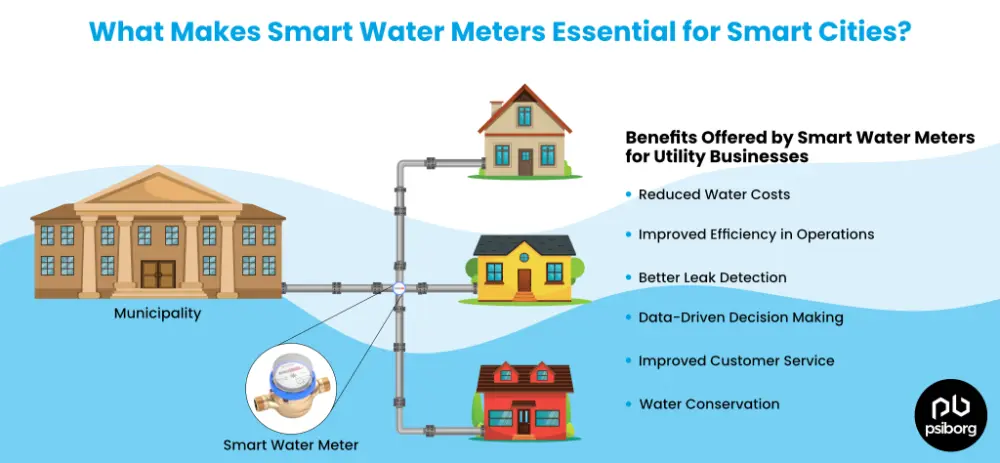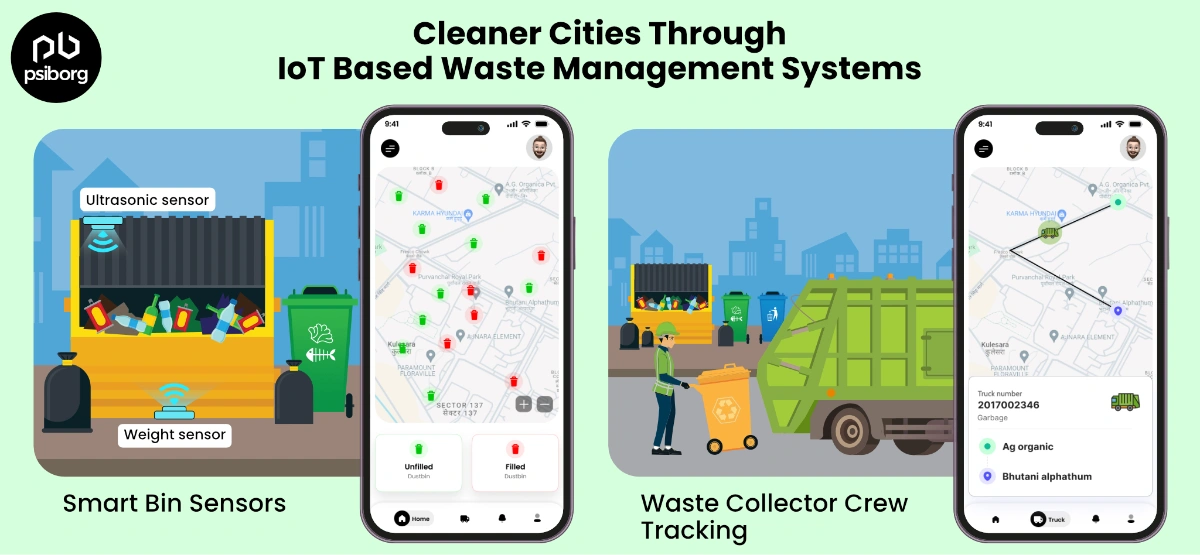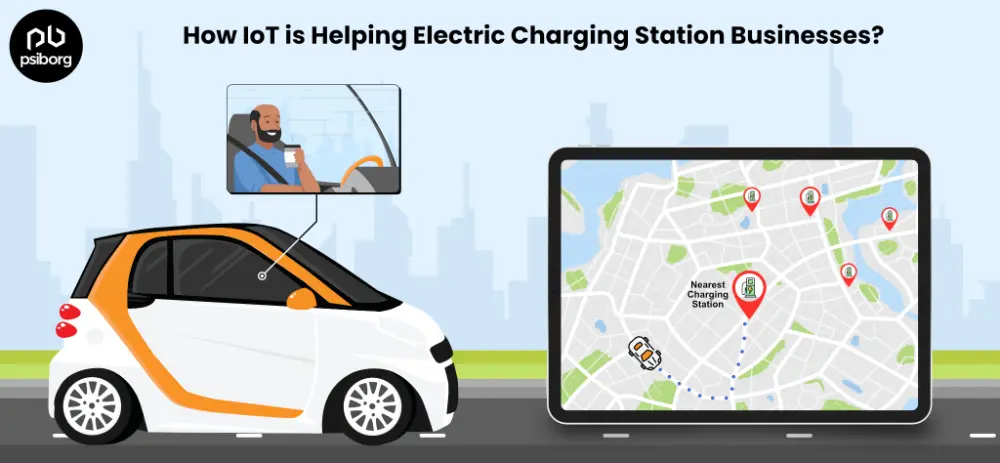Smart cities use technologies to improve the quality of life of their citizens and make cities Sustainable. IoT based waste bin monitoring is one of the important aspects while talking about Smart Cities.
The weekly garbage picks, suited-up garbage collectors, and massive trucks have only led the entire system to a hazardous environment, plenty of human and mechanical downtime, and high costs. After seeing such depressing impacts, companies offering cleanliness services in smart cities and governments have started looking for a solution. And they understand the solution lies in advancing technology. They have begun adopting IoT based waste bin monitoring for smart cities.
The challenge
With the increasing population in cities, the amount of waste generation also increases. We often see over-filled bins, whose cost of collection is very high for authorities, and current waste collection practices are unsustainable because it depends heavily on garbage collectors.
IOT WASTE BIN MONITORING FOR SMART CITIES: WHAT IS IT?
When it comes to defining IoT based waste bins, we can say that these are intelligent waste management systems dependent on wireless ultrasonic fill-level sensors. These sensors come embedded inside the smart garbage bins and detect how full the garbage bin is. After that, the collected data is sent through the IoT to a cloud-based analytics and monitoring platform. Also, it monitors the internal capacity and sends an email or SMS to the custodial team. Further, waste collection services can use the data to optimize their frequency and routes.
- IoT based waste management can be taken as an integrated system with a real-time monitoring dashboard.
- It is an amalgam of processors, sensors, and communication modules.
- These IoT enabled waste bins work efficiently due to the combined power of robotics, AI systems, and data processing.
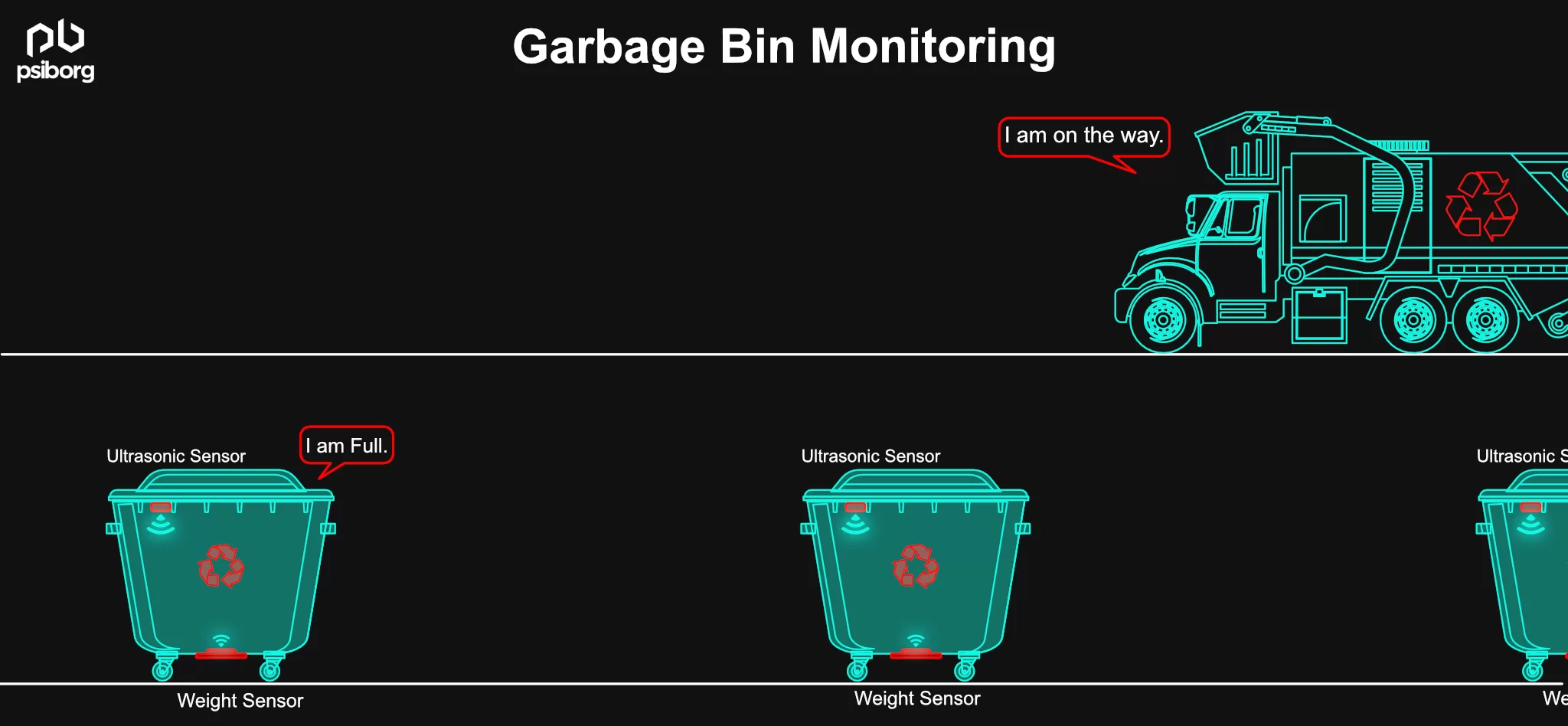
COMPONENTS OF GARBAGE MONITORING SYSTEM
There are four main components of Waste Bin Monitoring.
1. SENSOR NETWORK FOR WASTE BIN MONITORING
Every bin is fitted with a Micro-controller device that reads the data of Sensors and transmits it to a Cloud based Central System. Sensors can be of many types i.e., to detect the level of garbage (most important) Humidity (to classify wet and dry waste collection), and Toxic gases (Medical Waste).
2. COMMUNICATION PROTOCOL
To collect the data of monitoring sensor nodes and to manage communication between end node devices and network gateway, suitable communication protocols required. It allows easier scalability as one gateway can handle thousands of nodes within a few Kilometers.
3. CLOUD BASED CENTRAL SYSTEM
It is a cloud based app that stores the data received from waste bins. The Simulated and Analyzed data with meaningful information about each garbage bin is sent to the front-end user interface or IoT Dashboard
4. IOT DASHBOARD TO VISUALIZE SENSOR DATA
It is a GUI based user interface application that with GPS enablement that projects the data to different users like Municipal HQ, Command Centre, Garbage Trucks, Recycling Plants, and Citizens. The information shown to each party is controlled and according to the need.
With the help of this App and Sensor Network system in place, the Garbage trucks know which garbage bins require cleaning, Citizens know where to dump their waste, and Command Centre can have oversight on the entire system of Waste collection. The entire data generated through this system will be helpful in further analyzing and process optimization in the future.
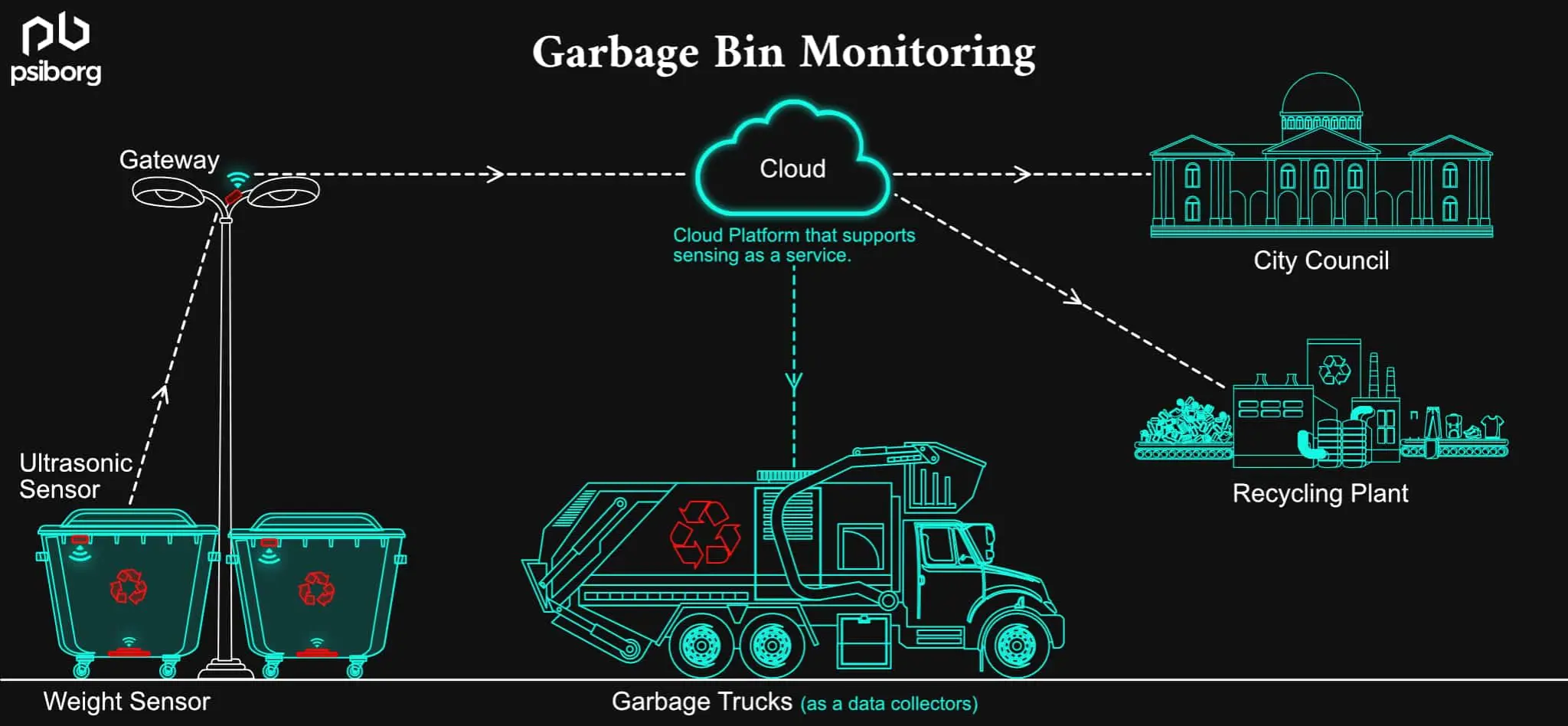
BENEFITS OF WASTE MANAGEMENT
Smart bins come with technically advanced features that help keep the cities clean and reduce the pollution level to a great extent. Besides, it also offers many other significant benefits which we have mentioned below.
REAL-TIME DATA & TRANSPARENCY
The system helps waste management teams to get an insight into the data anywhere and anytime using their phone, tablet, or laptop. They get real-time data which includes the last garbage pickups, the last date of garbage pickup, the status of all compactors, and the weight of the container. Even users can see the data they need by entering the dashboard. Besides, the team members and waste management staff can receive real-time data through a secure SMS alert or email right to their phones.
REMOVE THE RISKS AND COSTS RELATED TO UNNECESSARY COLLECTIONS
IoT-based waste bin management system allows stakeholders to eliminate the costs and risks associated with unnecessary collection. As a result, it helps them save time for the staff, fuel, and maintenance costs. Further, your company can streamline its services.
REDUCES CARBON FOOTPRINTS
The traditional system of waste management uses trucks for garbage collection and disposal which are powered by fossil fuels. It harms mother nature in all aspects through carbon emissions. But the IoT-based waste bin management for smart cities can help waste-collecting companies limit carbon emissions. They can route their trucks to places with full garbage bins. It reduces pickups and carbon emissions as well.
REMOTE MONITORING & REDUCING LABOR COSTS
In case there is any malfunctioning in the smart bin or it is overflowing, the waste management systems schedule remote diagnostics allowing their managers to detect the issues and address them. It means the companies don’t need to send their staff to the field. Apart from this, IoT-based waste bin management for smart cities can help companies to reduce their labor costs. The system can forecast the pickup schedule according to the exact need and it requires few employees to do the task.
Final Thoughts
Overall, IoT based waste bin management for smart cities is improving efficiency in the garbage collection and monitoring process. Also, it is helping waste management companies to find cost-effective ways to maintain the greenery and cleanliness of the city. They can make data-driven decisions, tweak routes for their drivers, and become efficient over time. Not only can it play a huge role in keeping our cities clean but also keep mother nature free from pollution.



